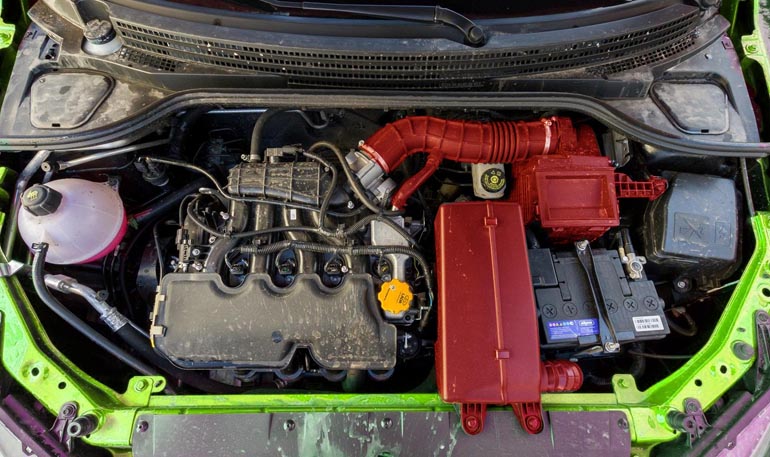
Vehicle intake system
Content
The operation of any internal combustion engine is based on the combustion of a mixture of air and fuel in the cylinders of the unit. In addition to the fact that air and combustible material (gasoline, diesel or gas) must be supplied to each cylinder, an accurate calculation of the volume of each substance is needed, and they must be mixed qualitatively. As motors improve, so do the systems that are needed to maximize their efficiency.
Engine efficiency depends not only on the quality of the fuel system and ignition performance. If the fuel does not mix well with air, most of it will not burn, but will be removed from the car through the exhaust pipe (how this will affect the catalytic converter has been described here). To increase efficiency, environmental friendliness and efficiency, various parameters of the power unit are being improved.
Let's consider what role the intake system plays in this, what elements it consists of, what is its purpose, what is the principle of its operation.
What is a car intake system
Old engines, which are still found in domestic cars, did not have an intake system as such. The carburetor engine has an intake manifold, the pipe of which passes through the carburetor to the air intake. The device itself has the following principle of operation.
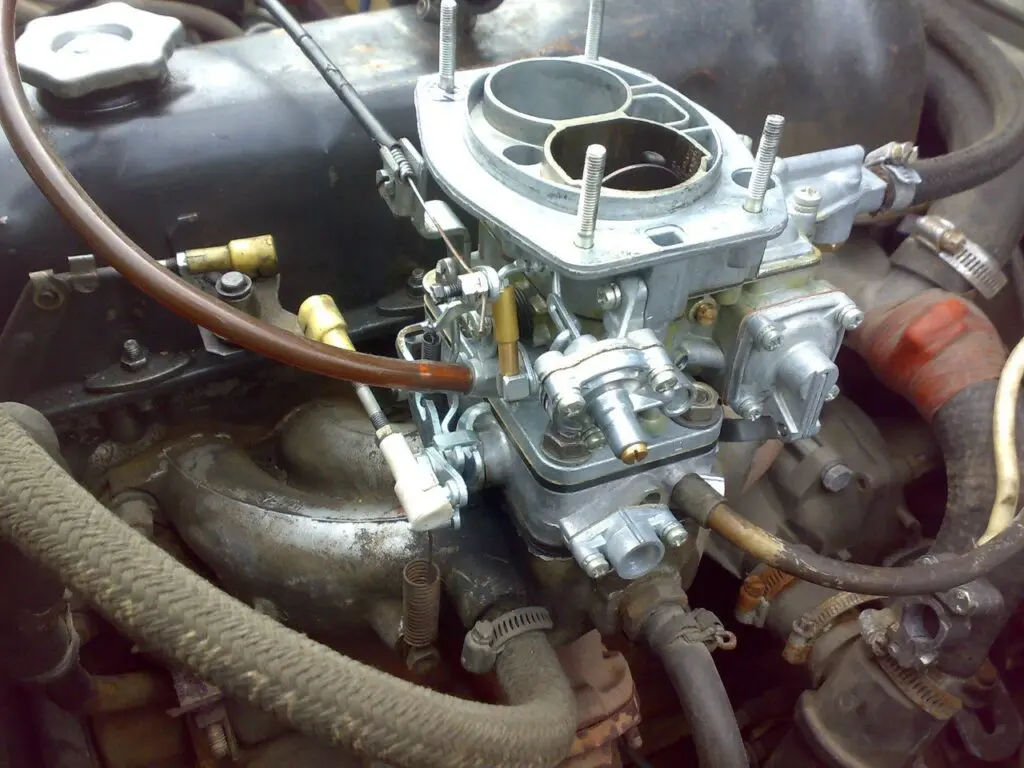
When a piston in a particular cylinder completes an intake stroke, a vacuum is generated in the cavity. The gas distribution mechanism opens the intake valve. An air flow begins to move through the manifold channel. Passing through the mixing chamber of the carburetor, a certain amount of fuel enters it (this volume is regulated by the jets, which are described separately). Air cleaning is provided by an air filter installed in front of the carburetor.
The mixture is sucked into the cylinder through an open valve. Any atmospheric engine has a vacuum principle of operation. In it, the air-fuel mixture enters naturally by means of a vacuum in the intake manifold. The primitive intake only provided air to the carburetor chamber.
This system has a significant drawback - the high-quality operation of the system directly depends on the structure of the path connected to the cylinder head. Also, as the MTC passes through the collector, a certain amount of fuel may fall on its walls, which negatively affects the economy of the car.
When the injector appeared (what it is and how it works, it is told separately), it became necessary to create a full-fledged intake system that would have the same function - to take air and mix it with fuel, but its operation would be controlled by electronics.
Electronics more efficiently calculates the optimal proportion of air and fuel volume and maintains this parameter in different operating modes of the internal combustion engine. It also provides better cylinder filling at low engine speeds. This improvement in the intake of the unit increases its performance without increasing fuel consumption. The optimum air / fuel ratio is 14.7 / 1. The mechanical type of the intake is not able to maintain this proportion at different operating modes of the unit.
If earlier the car had only an air duct through which air naturally flowed (its volume was determined by the physical properties of the air duct and actuators), then a modern car receives a whole system consisting of various mechanisms that are electrically controlled. They are controlled by an ECU, thanks to which the BTC is of better quality.
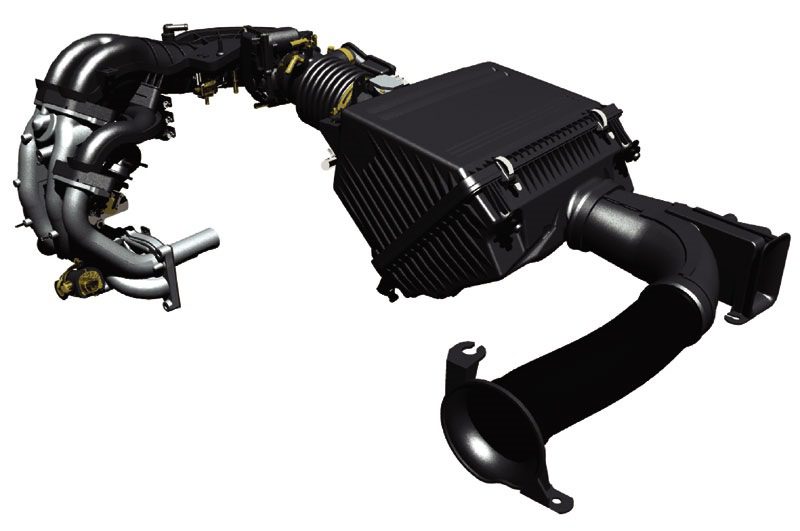
It is worth mentioning that gasoline, including gas (using non-standard or factory LPG), and diesel engines receive a similar intake system. However, depending on the type of injection, it may have a slightly different device. In another review describes the types of injection systems.
The modern intake system works in sync with other systems on the machine. For example, this list includes exhaust gas recirculation and fuel injection. In order to better fill the cylinders with a fresh portion of the air-fuel mixture, a turbocharger is often installed at the inlet. What is a turbocharger in a car is separate review.
How the intake system works
The intake system operates based on the pressure difference between the cylinder and the atmosphere. It appears when the piston moves to bottom dead center on the intake stroke (when the stroke is performed, the intake and exhaust valves are closed), and the valve through which air and fuel enters the tank is open.
The amount of air directly depends on the size of the cylinder itself. However, this volume is adjustable so that the engine can run at a lower speed, and if necessary, the crankshaft can be cranked more (when the car is accelerating). To change the operating mode, a special air valve called a throttle valve is used.
In the carburetor, this element is associated with the accelerator pedal. The more the valve opens, the more fuel is drawn into the intake manifold path. The injection motors receive a special choke. It has a small electric motor that is connected to a control unit. When the driver presses the gas pedal, the ECU uses programmed algorithms to determine to what extent to open the air valve.
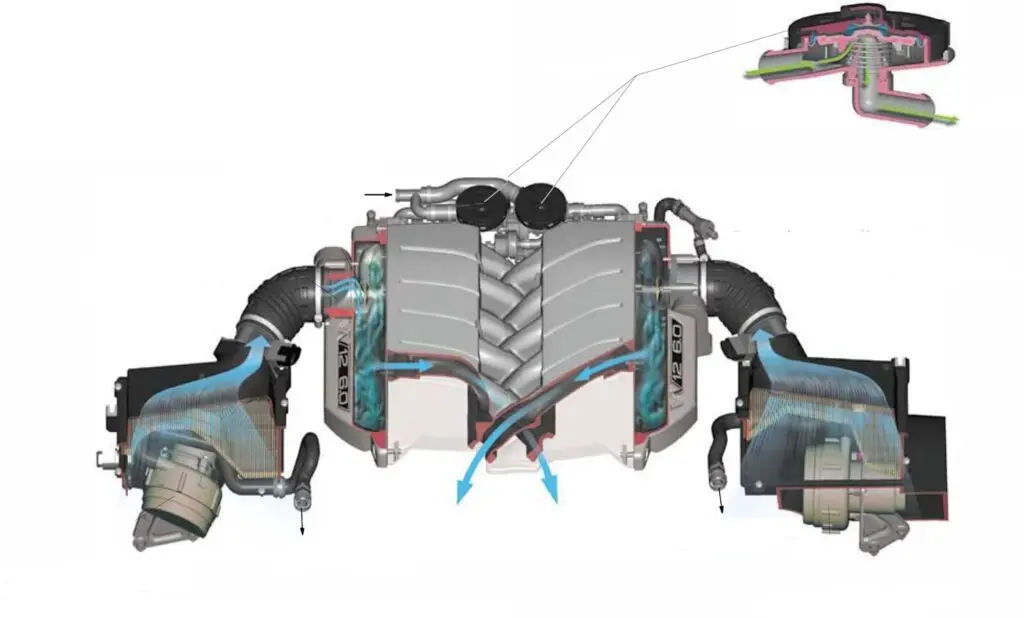
To maintain the ideal proportion of air and fuel, there is a throttle sensor near the throttle, the signals from which are sent to the electronic control unit (in many modern systems, two air sensors are installed: one in front of the damper, and the other behind it). Having received this data, the electronics increase / decrease the amount of fuel that is supplied through the injector nozzles (their structure and principle of operation is described in another article).
Depending on the type of injection, the intake tract may have a slightly different design. For example, in a distributed modification, the intake system is involved in mixture formation. In this design, the injectors are installed in each manifold pipe as close as possible to the intake valves. Most modern injection machines receive such a system.
If the engine has direct injection (in the case of diesel units, this is the only modification), then the intake system only supplies the cylinders with a fresh portion of air. In this case, the combustion of fuel is as efficient as possible, since mixing takes place directly in the cylinder cavity without losses in the intake tract.
Moreover, due to the design features of this injection (additional flaps are installed on the intake manifold, their synchronization of operation is provided by a common shaft with an electric drive), the fuel system can provide different mixture formation. There are two main types:
- Layer-by-layer type. In this mode, the nozzle sprays fuel into the cylinder, distributing it as much as possible throughout the chamber. The temperature of the incoming air is high, due to which the gasoline begins to evaporate, better mixing with the air. This mode is used at low speeds and at low loads on the internal combustion engine.
- Homogeneous (homogeneous) type. It is essentially a lean mixture. In theory, the pressure in the cylinder with the valves closed directly affects the engine output during the combustion of the air-fuel mixture. From this, it can be concluded that in order to increase the torque at the minimum fuel consumption, it is necessary to increase the volume of air entering the chamber. However, in the case of distributed injection, the following problem is observed. If the proportion of BTC is changed in the direction of increasing the amount of air (lean mixture), then such a mixture will ignite poorly. For this reason, this type of mixture formation is not used on distributed types of injection systems. But as far as direct injection is concerned, this is real. Lean ignition is possible due to the fact that a relatively small amount of fuel is sprayed in the immediate vicinity of the spark plug. Compared to the total amount of compressed air, there is little fuel in the cylinder, but due to the fact that there is an enriched cloud near the spark plug electrodes, the engine does not lose its efficiency even with significant fuel savings.
Here's a quick animation of how the VBM circuit works:
Depending on the type of fuel system and the design of the actuators, there may be even more such modes. Each of them is activated by electronics, which records the engine speed and load on it. To provide different modes of mixture formation, each manufacturer uses its own mechanisms.
For example, in some engines special multi-mode nozzles are installed, and in others, in addition to the throttle valve, intake valves are also installed. Depending on the mode, they can open and close independently of the throttle valve.
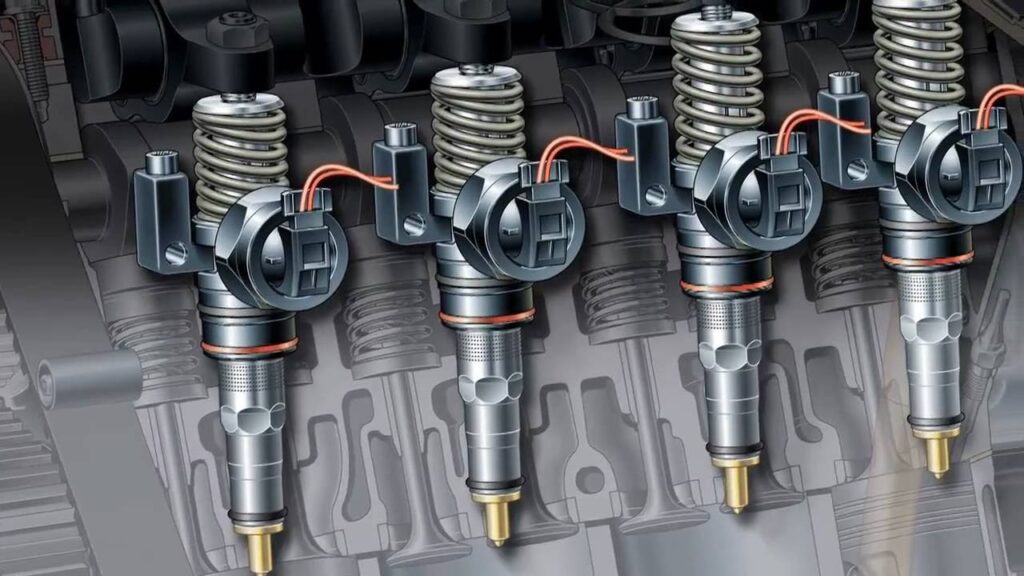

When the air / fuel mixture has burned out, the exhaust gases are removed through the exhaust. This is a different vehicle system. In addition to removing exhaust, it compensates for pulsations of the gas flow and reduces engine noise (for more details about the design and purpose of the exhaust system, read here).
The brake booster also partially uses the vacuum generated in the intake manifold. Along the way, it is equipped with a valve that cuts off the exhaust gas recirculation system.
The scheme of the modern intake system includes many different sensors and actuators, so that it adjusts in a split second to the operating mode of the engine or changing loads on the power unit. Some modern models use a special technology, the goal of which is to improve the efficiency of the internal combustion engine by changing the length and cross-section of the intake tract.
This upgrade allows you to extract maximum torque at reduced atmospheric engine speeds. The design and principle of operation of a collector with a variable length and section is described in detail in another article.
Design
The device of the intake system includes the following elements:
- Air intake. Each car model has its own design. The key element in this unit is the air filter. It is placed in a housing (often it is a tray hermetically sealed on all sides, but there are also open filters installed directly on the air intake), which has an open branch pipe on one side. Through this hole, air enters the filter element, is cleaned and enters the intake pipe. Details about air filters are described here.

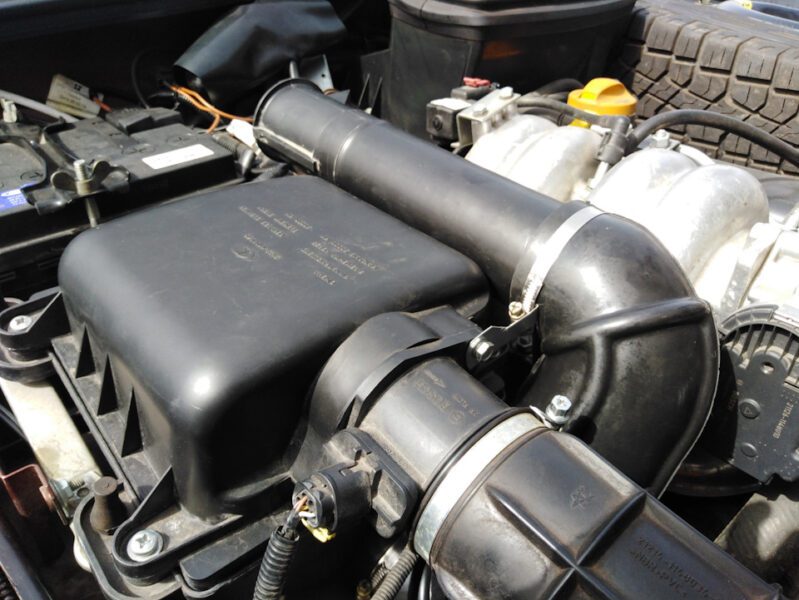
- Throttle. In its modern design, it is an electrically actuated valve that is installed on the pipe running from the air intake to the manifold. Depending on the needs and loads of the motor, the electronic control unit issues an appropriate command to open / close the damper. This controls the internal air flow.

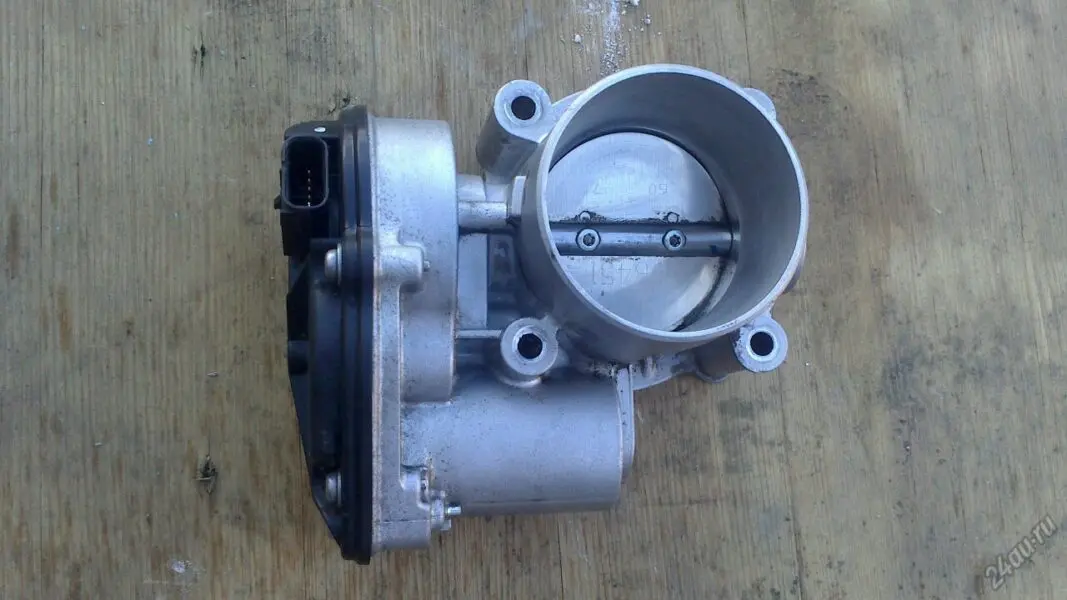
- Receiver (or collector). An intake manifold is installed between the throttle and the cylinder head. This is a complex pipe. On the one hand, it has one, and on the other, several branch pipes (their number depends on the number of cylinders in the block). The purpose of this part is to distribute the internal air flow among the cylinders. If the fuel system is of a distributed type, then a hole will be made on each pipe, in which the fuel injector will be fixed. In this case, the intake system is directly involved in the formation of the air-fuel mixture. If the engine has direct injection (the injectors are near the spark plugs or glow plugs for diesel engines), then the intake simply regulates the air supply.

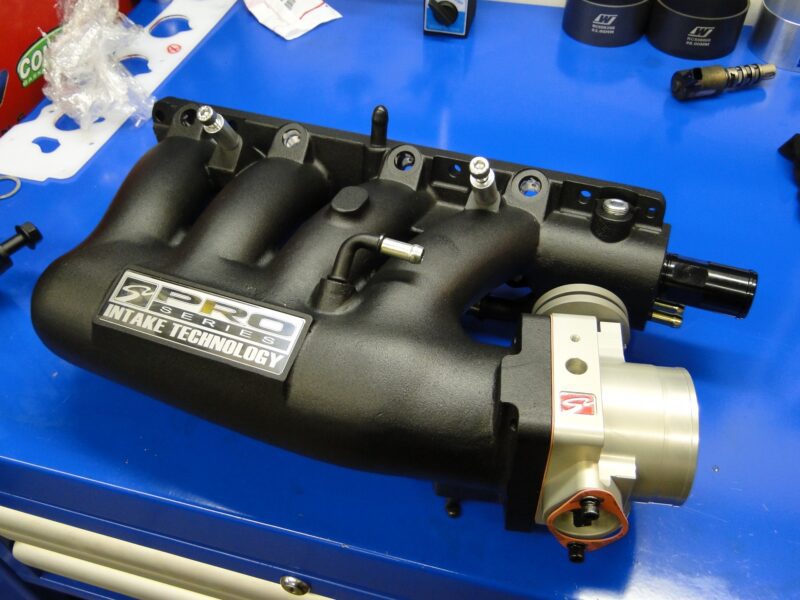
- Intake flaps. These are additional valves that are installed inside the manifold pipes to regulate the type of mixture formation. These elements are used in internal combustion engines with direct injection.

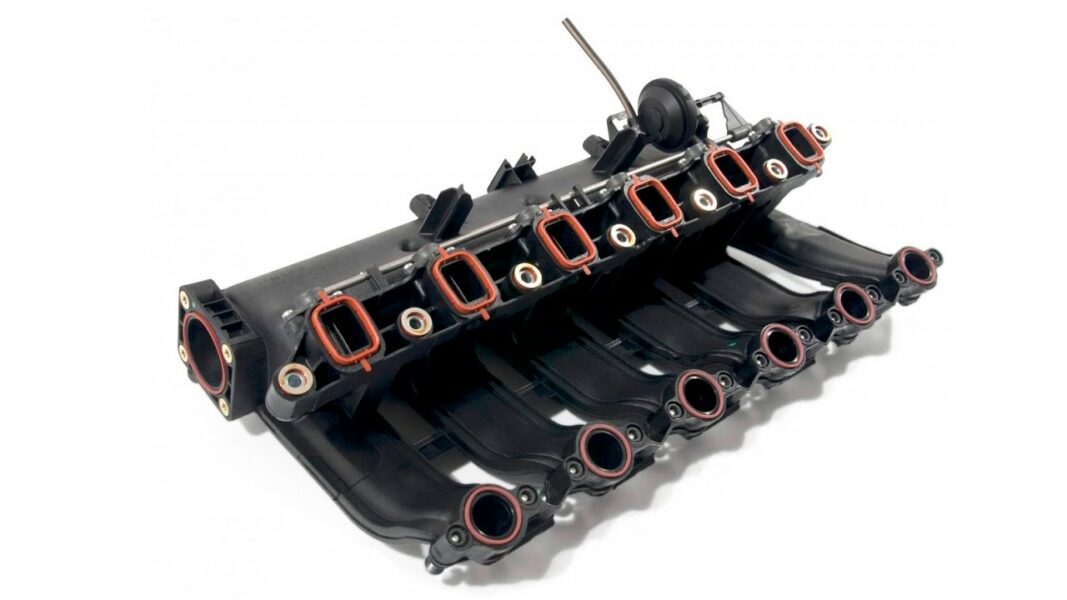
- Air sensors. They record the strength of the air flow in front of and behind the damper, as well as its temperature. The signals from these sensors are sent to the control unit.

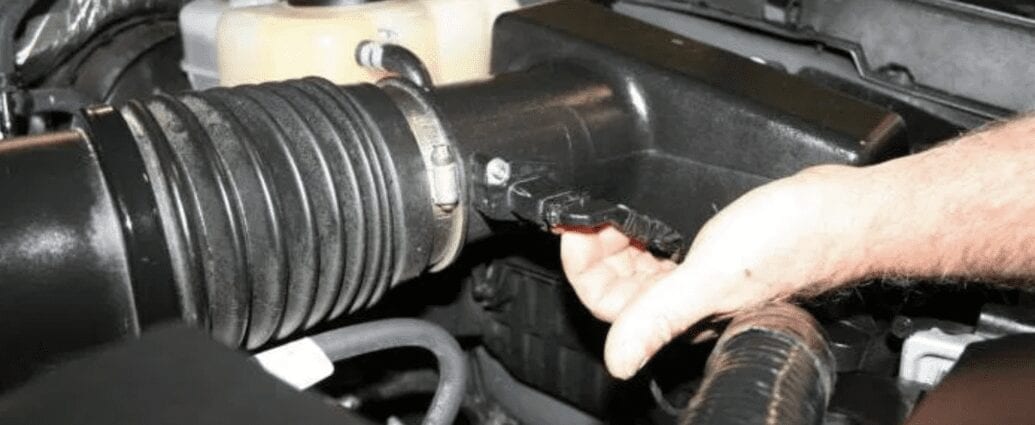
The ECU is responsible for the synchronous operation of all actuators of the intake system. Based on the signals received from the gas pedal, the mass flow sensor and other sensors with which the vehicle is equipped, the electronics activates a specific algorithm. According to the brain program, all devices simultaneously receive the appropriate signals.
What is needed for
So, as you can see, without a high-quality intake system, consisting of a different number of sensors and actuators, it is impossible to create an economical, but at the same time quite dynamic and environmentally friendly car.
The only drawback of modern intake systems is the cost and complexity of maintenance. If the carburetor engine can be diagnosed and repaired by the efforts of an experienced auto mechanic, then the electronics are checked only on special equipment. To repair it, you need to visit a specialized service center.
As an addition, we suggest watching a video lecture about the intake system of the car:


Watch this video on YouTube
Questions and answers:
What is an engine intake? Another name is the intake system. This is an air intake connected to a pipe that branches out into several pipes (one per cylinder). The system is needed to supply fresh air and form a VTS.
What happens if the intake manifold is enlarged? Elongation of the aspirated manifold will result in greater inlet resistance, which will result in poorer combustion of the VTS. This will result in a decrease in torque and power.


2 comment
P
Does anyone of you read the text before posting it online? Poorly constructed article. Section headers mismatched, duplicated, some terms simply thrown into the text without explanation (probably the author does not understand them himself, he just rewrote/translated the text from somewhere). But I found out, for example, that "Closed valves are closed". And twice. Embarrassing
Pawel
Great article, thanks.